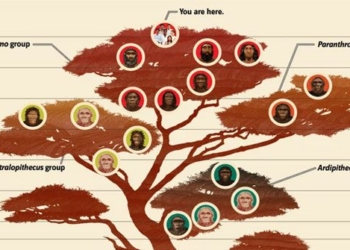The Origin of the Tibetan Mastiff: Myths and Facts – There are numerous theories circulating on the Internet regarding the origin of the Tibetan Mastiff. However, what is less known is that the Qinghai-Tibet Plateau, in its early days, did not have any dogs, let alone Tibetan Mastiffs.
Among all dog breeds in China, the Tibetan Mastiff is the most recognized, originating from the Qinghai-Tibet Plateau. It gained immense popularity in China during the 1990s and early 21st century.
During that time, the price of Tibetan Mastiffs was extraordinarily high, with some even selling for up to one million dollars. In fact, initially, Tibetan Mastiffs were only popular among a small group, such as livestock herders.
By the 1980s, due to their unique appearance and fierce temperament, they became popular abroad, attracting a large number of foreign enthusiasts. In the 1990s, the trend of raising Tibetan Mastiffs returned to China, creating a wave known as the “Tibetan Mastiff craze.”
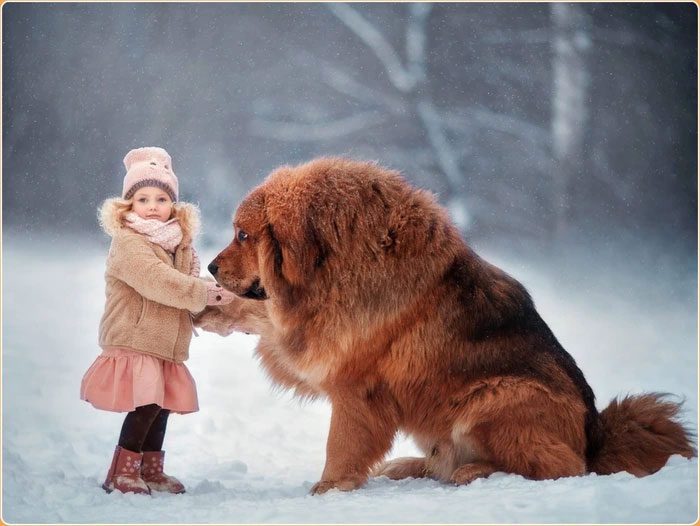
This breed originates from the Qinghai-Tibet Plateau.
At the peak of their popularity, many people took great pride in owning a Tibetan Mastiff. However, the outcome was entirely predictable. After 2013, the trend of raising Tibetan Mastiffs gradually declined, resulting in a significant decrease in public perception of the breed compared to the initial acclaim.
In reality, Tibetan Mastiffs are not suitable for low-altitude environments. As a plateau breed, they are large and robust dogs that thrive in high-altitude environments rather than in confined urban settings.
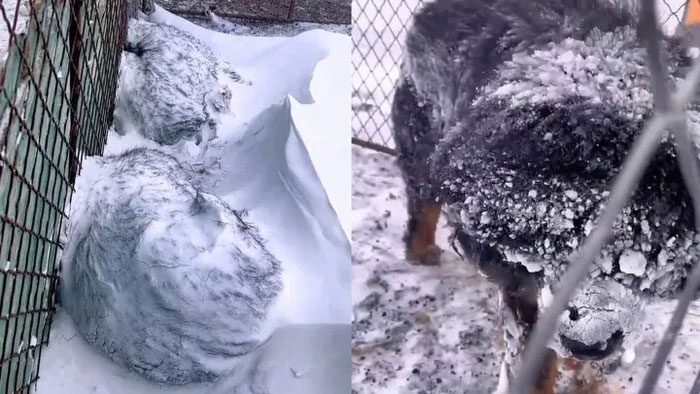
In the image, two Tibetan Mastiffs are unfazed by strong winds and falling snow, sticking close to the sheep pen in -40 degree weather, using the ground as a bed and thick snow as a blanket to curl up and sleep.
In this environment, most other dog breeds cannot endure for long, yet Tibetan Mastiffs manage to hold their ground, showcasing their adaptability to high-altitude conditions. So how did such an excellent highland breed come to be?
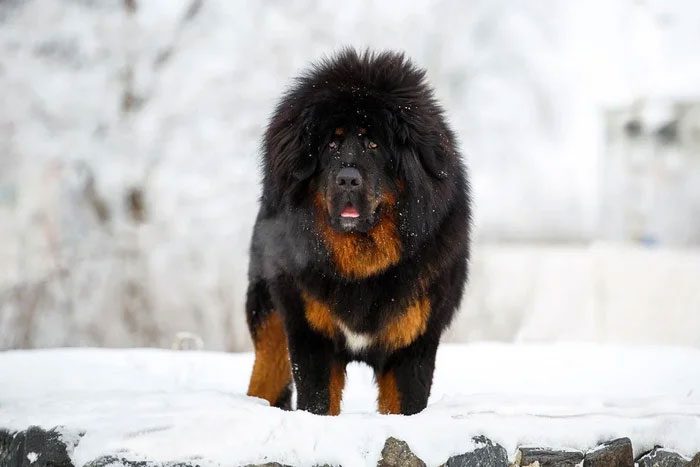
In the early days, there were no dogs on the Qinghai-Tibet Plateau.
Regarding the origin of the Tibetan Mastiff, many theories circulate online. For instance, “ten dogs give birth to one Mastiff”: Livestock herders would confine all newborn puppies in a small room without food, leading to fights among the starving pups, with only the fiercest and strongest one surviving to become the Tibetan Mastiff.
Of course, these are merely embellished stories with details that are purely fictional. In reality, there were no dogs on the Qinghai-Tibet Plateau in its early days; they were brought by early migrants.
The dogs that lived on the Qinghai-Tibet Plateau were, for the most part, lowland breeds. Like most dog breeds, they struggled to survive in the natural environment of the plateau.
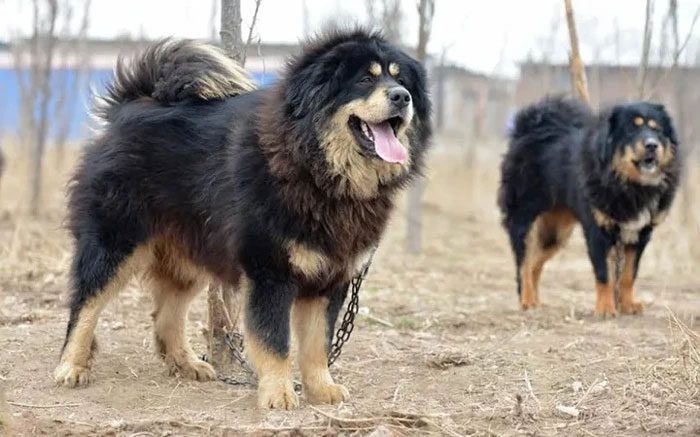
The transformation of Tibetan Mastiffs is an adaptation to environmental changes.
However, the appearance of modern Tibetan Mastiffs is entirely different from many breeds that live at high altitudes; they have thick fur and a massive build resembling lions, which is a primary reason they are sought after by foreigners.
The transformation of Tibetan Mastiffs is an adaptation to environmental changes. After their ancestors entered the Qinghai-Tibet Plateau, they continued to breed and began to come into contact with wild Tibetan wolves.
As we all know, dogs were domesticated from gray wolves at the end of the Pleistocene epoch, and without reproductive isolation from wolves, some dogs and wolves naturally interbred.
Interbreeding with ancient Tibetan wolves is the fundamental reason why Tibetan Mastiff puppies gained the ability to adapt to high-altitude environments.
As we know, animals like snow leopards can survive for long periods in cold and low-oxygen environments. To find out why, scientists have conducted extensive research and ultimately discovered a gene called “EPAS1.”
This gene has been found in many species living in high-altitude environments such as snow leopards, desert cats, and Tibetan foxes, but is absent in species that live at low altitudes, such as gray wolves, domestic dogs, and golden jackals.
Research has shown that the EPAS1 gene can influence the regulatory mechanisms of hemoglobin production in animals, making their bodies highly sensitive to changes in oxygen levels, allowing them to survive for extended periods even in low-oxygen environments.
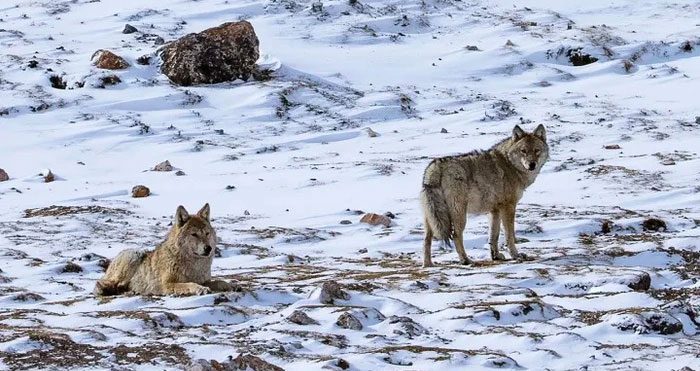
Tibetan wolf.
The EPAS1 gene is also inherited by puppies resulting from the mating of dogs with Tibetan wolves, coupled with prolonged exposure to cold environments, leading to gradual adaptive changes in their appearance. For instance, they become larger, have thicker fur, and increased body fat, all of which help them adapt to their environment.
Dogs and wolves diverged from their common ancestors long ago, and both evolved in different directions. However, due to random coincidences, they have points of intersection.
Scientists have constructed a phylogenetic tree of dogs for the EPAS1 gene region and found that it is very likely that the ancestors of Tibetan Mastiffs interbred with Tibetan wolves around 24,000 years ago.
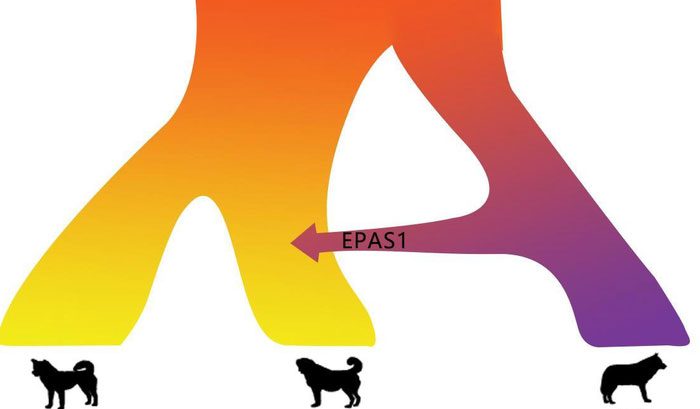
It is likely that the ancestors of Tibetan Mastiffs interbred with Tibetan wolves.
History has shown that the Tibetan Mastiff is one of the best herding dogs on the plateau and is also a fierce breed, rivaling wild beasts. With their superior abilities, they have left a lasting mark in the long history of livestock herders and are referred to as “the deity of the snowy region” in local lore.









































